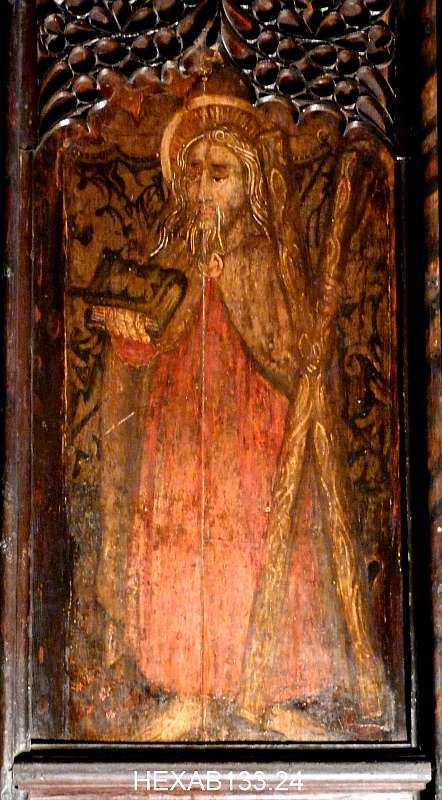 Click on
Click onThumbnail
for
23 photos
1865. The erection of a larger organ, brought from Carlisle Cathedral some years ago, has caused a great deal of reconstruction about the gallery and its eastern front. [Hexham Abbey, Monograph by Hodges, 1888, p.47]
Detailed drawing [HEXAB3044] by Hodges published as Plate 43 in his 1888 monograph.
The gallery above was widened and the pulpitum enlarged, when the present organ was put in, about 1865. [Hexham and its Abbey, Hodges, 1889, p.73]
1908: Alterations to the screen were criticized by Aymer Vallance in letters to The Times 18th & 31st August, and defended by letters from Greville H Palmer 21st August, W H Freemantle 24th August, and finally E Sidney Savage 11th September.
1989: Thorburn Preservation, Haltwhistle, having inspected suspected dry or wet rot in the timbers at the base of the Smithson Screen, treated these timbers against rising damp and fungal decay by injection of a chemical damp course into the stonework and treating the decay by chemical spray. [Churchwardens Record HEXAB9535 p63, 21 July]
1990: “Repairs to Smithson Screen.” [Churchwardens Record HEXAB9535 p67, 10 Jan]
1961: “(2) To restore the Mediæval Panel Paintings”; Faculty Regr. no.3. Faculty no. 2195, 10.7.1961
































































